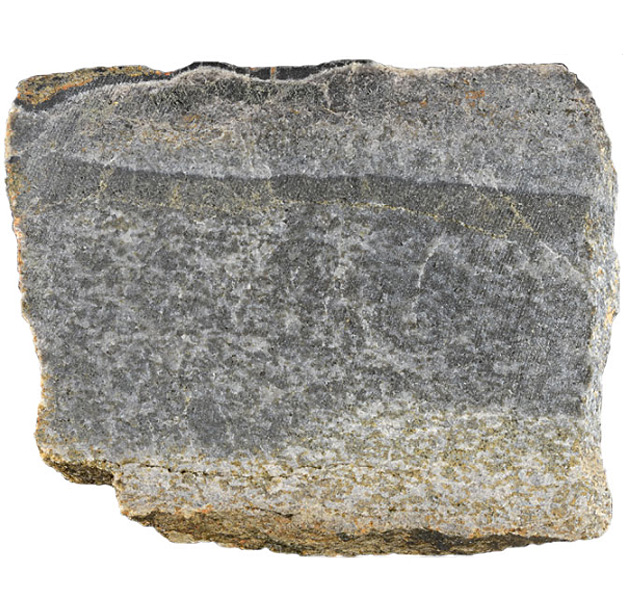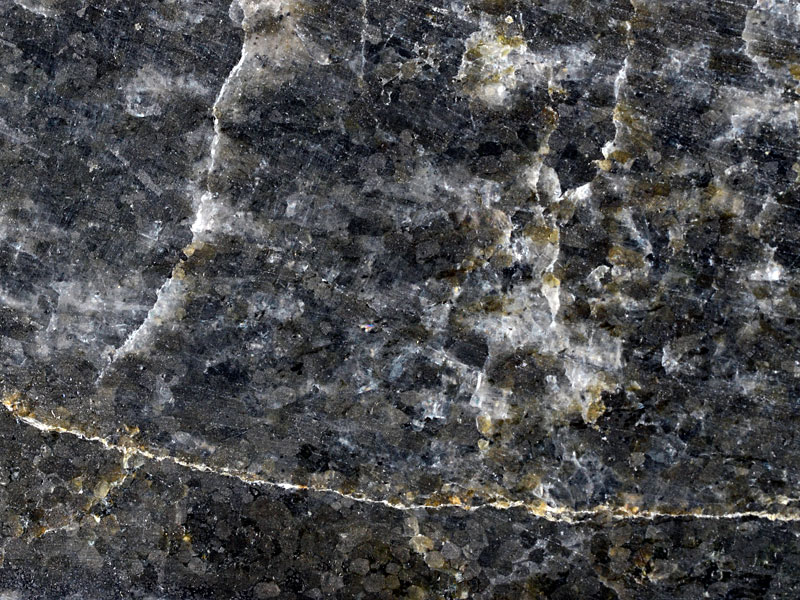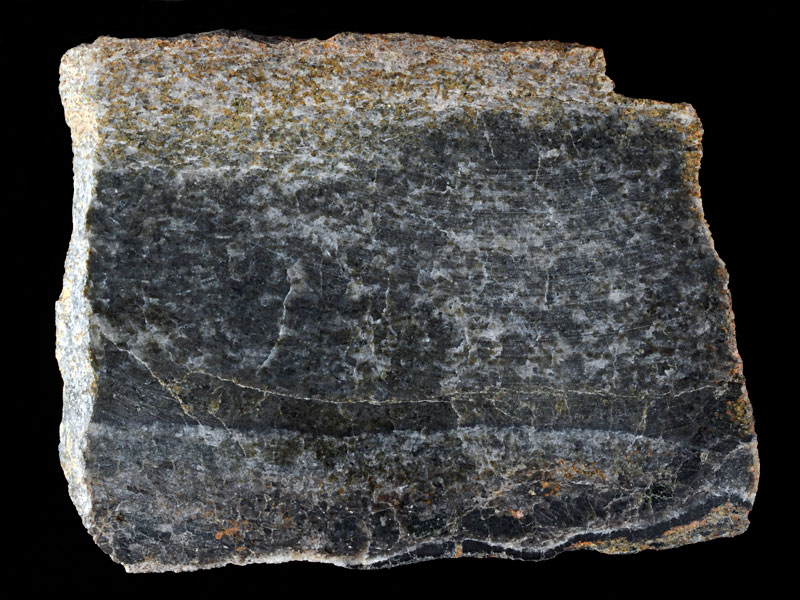
Fact sheet
This sample of troctolite comes from Cnapan Breaca on the Isle of Rum, which is a deeply eroded volcano formed in the Paleogene period. The remains of the volcano magma chamber exhibit layering reflecting the slow crystallisation of the magma as it cooled. The layers we see today formed as crystals of different composition and settled to the bottom of the chamber. In most cases the crystals continued to grow as they settled and, following their settling, the liquid filled pore spaces, which also crystallised, resulting in complex textures that allow geologists to track the evolution of the liquid magma composition in great detail. This sample comes from the uppermost part of one of 15 rhythmically layered units at the contact between units 7 and 8.
The thin section shows olivine grains apparently grading and settling, forming almost 100 per cent of the layer at one point just above a layer of smaller chromite grains (a denser and thus more rapidly settling mineral phase). Plagioclase also forms a cumulate phase intergrown with olivine. Pyroxene apparently grew late in the crystallisation sequence, filling spaces remaining between olivine grains.
The United Kingdom Virtual Microscope (UKVM) collection consists of igneous, sedimentary and metamorphic rocks from around the UK.
It is intended as a teaching resource, helping to tell the story of the common rock types and how they form, and reflecting the history of the UK at the margins of the continent of Europe. The collection is a series of teaching sets, for example igneous rocks from the North Atlantic Igneous Province and SW England; high-temperature metamorphic rocks from Scotland and low-temperature metamorphic rocks from Wales; and sedimentary rocks, including English limestones and sandstones.







